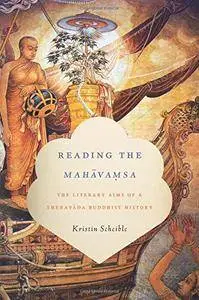Reading the Mahavamsa: The Literary Aims of a Theravada Buddhist History by Kristin Scheible
English | 2016 | ISBN: 0231171382 | 240 pages | EPUB | 4 MB
English | 2016 | ISBN: 0231171382 | 240 pages | EPUB | 4 MB
Vamsa is a dynamic genre of Buddhist history filled with otherworldly characters and the exploits of real-life heroes. These narratives collapse the temporal distance between Buddha and the reader, building an emotionally resonant connection with an outsized religious figure and a longed-for past. The fifth-century Pali text Mahavamsa is a particularly effective example, using metaphor and other rhetorical devices to ethically transform readers, to stimulate and then to calm them.
Reading the Mahavamsa advocates a new, literary approach to this text by revealing its embedded reading advice (to experience samvega and pasada) and affective work of metaphors (the Buddha's dharma as light) and salient characters (nagas). Kristin Scheible argues that the Mahavamsa requires a particular kind of reading. In the text's proem, special instructions draw readers to the metaphor of light and the nagas, or salient snake-beings, of the first chapter. Nagas are both model worshippers and unworthy hoarders of Buddha's relics. As nonhuman agents, they challenge political and historicist readings of the text. Scheible sees these slippery characters and the narrative's potent and playful metaphors as techniques for refocusing the reader's attention on the text's emotional aims. Her work explains the Mahavamsa's central motivational role in contemporary Sri Lankan Buddhist and nationalist circles. It also speaks broadly to strategies of reading religious texts and to the internal and external cues that give such works lives beyond the page.



